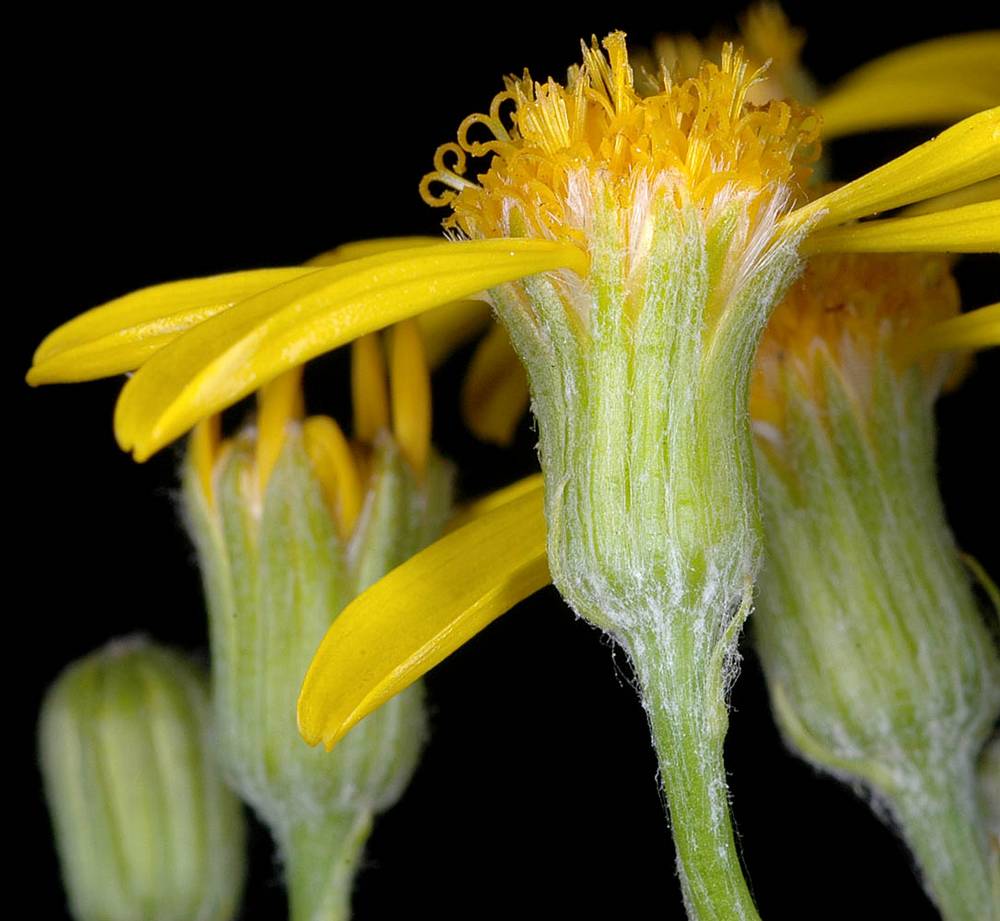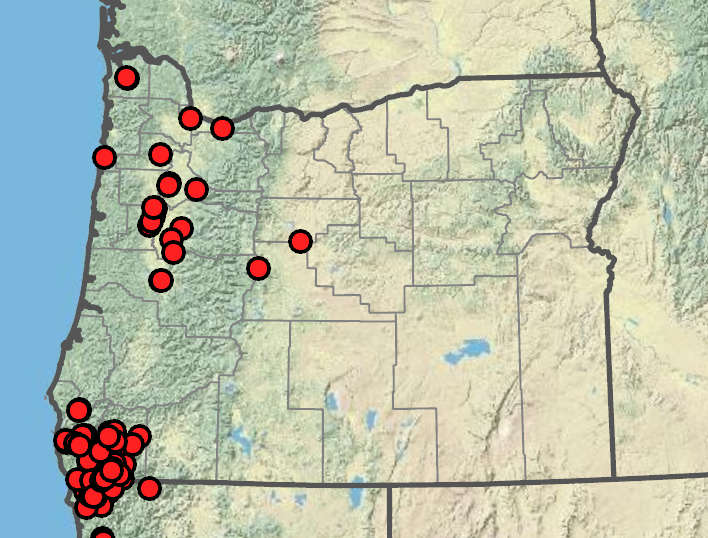Packera breweri
Packera macounii
long-rayed groundsel, Puget butterweed, Siskiyou Mountains ragwort
1, sparsely to densely tomentose or glabrate.
blades narrowly lanceolate to oblanceolate, bases tapering;
margins entire or shallowly toothed, slightly revolute, petiolate.
gradually reduced;
upper bract-like; lower petiolate; upper sessile.
cylindric to narrowly campanulate.
8(13);
rays 8–10+ mm.
30–40+;
corolla tubes 2.5–3.5 mm;
limbs 2–3 mm.
13 or 21, 5–7+ mm, green;
surfaces glabrous.
0 or inconspicuous.
3–4.5 mm, glabrous;
pappi 4–5 mm.
6–15+; in corymb-like arrays;
peduncles sparsely tomentose to glabrate;
bracts absent or inconspicuous.
=46, 92.
Packera breweri
Packera macounii
Streams, roadsides, clearings, disturbed areas, coniferous woodlands in rocky soils, serpentine. Flowering Apr–Jul. 50–1400 m. Casc, CR, Est, Lava, Sisk, WV. CA, WA; north to British Columbia. Native.
Packera macounii is similar in overall morphology to P. cana. However, its leaves are narrower and commonly revolute. Although it is often cited as being collected on serpentine soils, it is not restricted to them.
Debra Trock
- Local floras:
BC,
CA,
OR,
WA
- Local Web sites:
CalFlora,
CalPhotos,
Flora NW,
PNW Herbaria,
Turner Photog.
WildflowerSearch
iNaturalist (observations)
USDA Plants Database
- LBJ Wildflower Center
- SEINet
- Plants of the World Online
- Encyclopedia of Life
- Wikipedia
- Google Image Search



